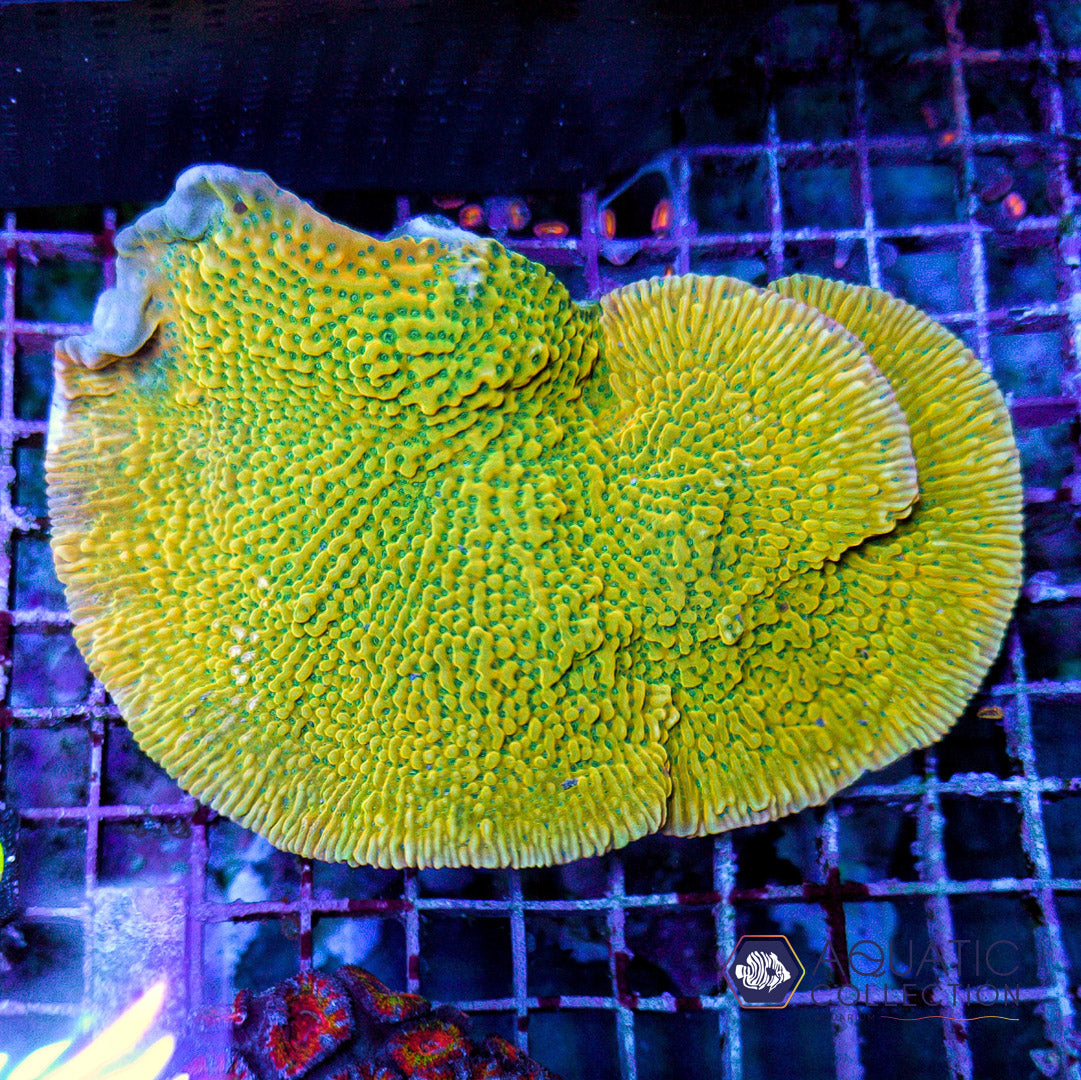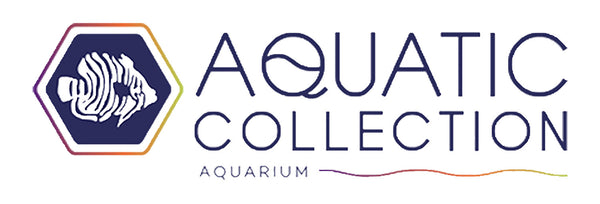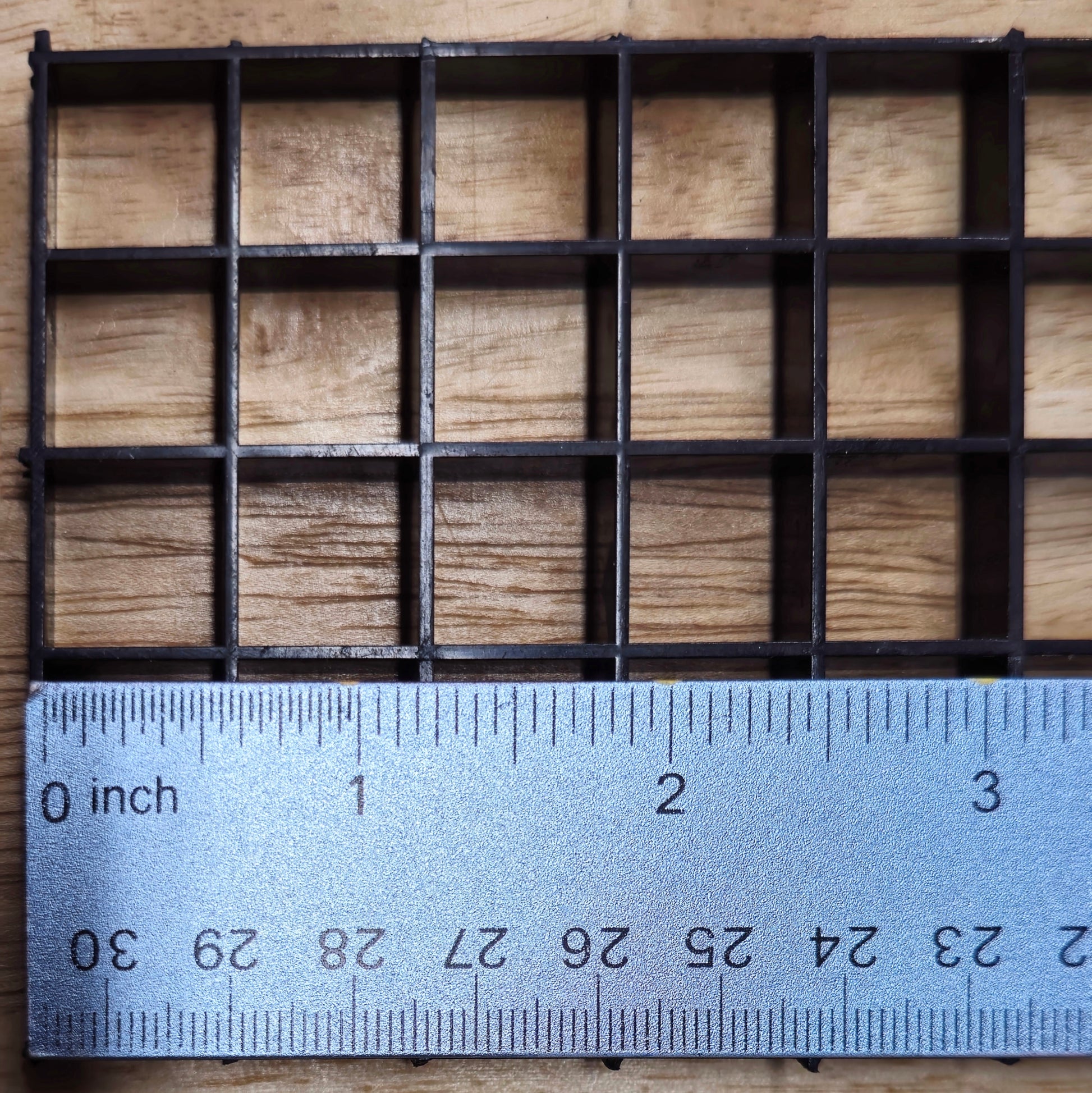Aquatic Collection Aquarium
Beach Bum Montipora Colony
Beach Bum Montipora Colony
Couldn't load pickup availability
Species: Montipora
Aproximate Size: 6"
Colors: Yellow, Green, Orange
Montipora palawanensis is a species of coral in the genus Montipora, which belongs to the family Acroporidae within the order Scleractinia (stony corals). It is commonly found in the Indo-Pacific region, particularly around the Palawan Archipelago in the Philippines (from which it gets its name), as well as other parts of Southeast Asia. As a member of the Montipora genus, it shares many features with other montiporids, including its growth form, coloration, and environmental preferences, but Montipora palawanensis has some unique characteristics that distinguish it from related species.
Physical Description
Montipora palawanensis typically forms encrusting, branching, or mound-like colonies, which are characterized by a relatively compact structure with a smooth or slightly undulating surface. Its appearance can vary depending on growth conditions, but there are several key features that help identify this species:
1. Colony Structure:
- Encrusting or Branching: In its natural habitat, Montipora palawanensis can grow as an encrusting coral, spreading across rocky surfaces, or develop into a more branching form where individual branches radiate outward from a central base. The branching form often has a loose, irregular structure, unlike the denser branching seen in other Acropora species.
- The branching colonies can grow in small clusters or extend into more sprawling mats, depending on available space and conditions.
2. Corallite Structure:
- The polyps of Montipora palawanensis are typically small, with rounded or hexagonal corallites (the individual skeletal cups housing the polyps).
- The corallites are generally closely spaced and shallow, giving the coral a smooth or slightly textured appearance. The skeletal structure can be quite porous, contributing to a relatively lightweight skeleton.
3. Coloration:
- This species exhibits a wide range of colors, with the most common being brown, green, and blue tones, sometimes with subtle hues of yellow, purple, or orange. These color variations are usually due to the presence of symbiotic zooxanthellae (photosynthetic algae) living within the coral tissues. The color of the coral can shift depending on light intensity, water quality, and the general health of the colony.
- Under brighter light conditions or healthy environments, Montipora palawanensis can display vibrant colors, such as neon greens or purples, particularly on the tips of branches or on the outer edges of encrusting colonies.
4. Growth Rate:
- This species is known for its moderate to fast growth, especially in ideal conditions with good water flow and lighting. Under favorable conditions, it can grow at rates of up to 2–3 cm per month.
- In aquariums, this coral can also exhibit rapid growth, though the growth rate will depend on factors such as water quality, light intensity, and nutrient availability.
Habitat and Distribution
Montipora palawanensis is native to the Indo-Pacific region, particularly the Palawan Archipelago in the Philippines, as well as areas of Indonesia, Malaysia, and parts of New Guinea. It is typically found in shallow to moderate depths of 1 to 30 meters (3–100 feet), often growing on reef slopes, drop-offs, or lagoonal reefs. The species prefers clear, nutrient-poor waters, where it can thrive in strong currents and moderate to high light levels. As a reef-building coral, it plays a role in enhancing the structural complexity of the reef.
Feeding and Symbiosis
Like other species in the Montipora genus, Montipora palawanensis is a photosynthetic coral, meaning it relies on a symbiotic relationship with zooxanthellae algae to produce food through photosynthesis. These algae live within the coral's tissues and use sunlight to produce sugars that nourish the coral. In return, the coral provides a protected environment and compounds like nitrogen and phosphorous to the algae.
- Photosynthesis: The primary source of nutrition for Montipora palawanensis is derived from its zooxanthellae, which require strong light for effective photosynthesis. This is why the species is often found in areas with high light intensity, such as shallow reefs or areas that receive direct sunlight.
- Plankton Feeding: While it primarily relies on photosynthesis, Montipora palawanensis can also capture small zooplankton or organic particles from the surrounding water using the tentacles of its polyps. The tentacles contain stinging cells (nematocysts) that help immobilize prey.
Aquarium Care
Montipora palawanensis is a popular choice among aquarium enthusiasts due to its attractive appearance and relatively easy care requirements compared to some other acroporids. However, it does require specific conditions to thrive in captivity:
- Lighting: This species needs moderate to high lighting, such as metal halide or LED lighting systems, to ensure that the zooxanthellae can perform photosynthesis efficiently. Placement in the tank should be in areas that receive direct light for most of the day.
- Water Flow: It requires moderate to strong water flow to keep the water oxygenated, promote healthy polyp extension, and help with the capture of planktonic food. Care must be taken to avoid strong, direct currents that could damage the coral or prevent proper growth.
-
Water Quality: Like all corals, Montipora palawanensis is sensitive to poor water quality. It requires stable parameters, including:
- Temperature: 76-79
- Salinity: 1.025-1.026 SG
- pH: 8.1-8.4
- Alkalinity: 8-12 dKH
- Calcium: 400-450 ppm
- Feeding: While it primarily relies on light for nourishment, it may benefit from occasional feeding of plankton or reef supplements to promote healthy growth, especially in nutrient-poor aquariums.
- Placement: In aquariums, Montipora palawanensis can be placed on rockwork or frag plugs where it has plenty of space to grow. It is relatively hardy but should be kept away from aggressive corals, as it can be susceptible to stinging and competition for space.
Share




